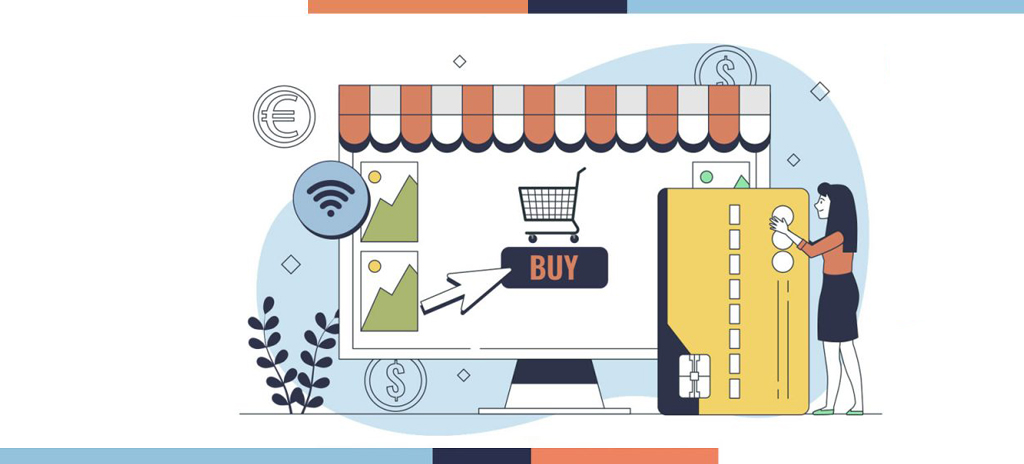E-commerce – or electronic commerce to give it its full title – is the buying and selling of goods and services between companies and individuals over an electronic network which is now what we know as the internet.
The rise of e-commerce has been swift. Although its origins can be found in Michael Aldrich’s idea for ordering goods through a telephone / television connection in 1979 and the Boston Computer Exchange of 1982, it wasn’t until the world wide web was invented and made available to a wider public in the early 1990s, that it became popular. But from that point on, there was no looking back.
To get an idea of just how quickly the rise of e-commerce has been, take a look at our timeline.
The rise of e-commerce
We’ve picked out just a few of the notable dates in the history of online shopping but what is most remarkable when looking at this timeline is the speed with which e-commerce has become part of our everyday lives. The way we purchase goods and services has been revolutionized in a relatively brief period and the progress of e-commerce looks unlikely to slow down any time soon.
Pandemic-powered push
The major influencing factor on e-commerce over the last 2 years has been the Coronavirus pandemic. As we’ve spent much of our time inside our houses and away from offices and shops, we’ve increasingly turned to the internet for our retail experiences as well as our leisure activities and essential services.
E-commerce became a lifeline for some. The vulnerable and elderly have taken to online shopping during the pandemic and many of us will know and have supported people who learnt how to use this technology during the ongoing crisis. (My mother who is approaching eighty, has entertained me no end with her tales of calls to specialist customer helplines and the endless attempts to get delivery spots. She has found it challenging but ultimately convenient and the likelihood is that she’ll continue using it, having now become a master of the art).
Grocery e-commerce boomed during the initial stages of the pandemic with analysts estimating that it was accelerated by 3 to 5 years. Although shopping in person for essentials has returned to a certain degree, the pandemic effect has meant many people will continue to use online services. Other sectors that experienced rapid digital growth were home fitness, furnishing and household goods and clothing.
UNCTAD, the United Nations trade and development body, reported in March 2021 that a pandemic-related increase in e-commerce was seen across all regions but ‘with consumers in emerging economies making the greatest shift to online shopping’. It cites Latin America and Thailand as examples where growth was strong and also mentions a significant rise amongst those in African nations.
For the third quarter of 2021 Salesforce’s shopping index showed a noticeable climb in e-commerce use in Eastern Europe and AppsFlyer documented a 48% global surge in shopping app downloads during the first part of the same year.
In short e-commerce is on the up and being adopted on a wider geographic scale, using an increasingly diverse number of languages. The pandemic-powered push has accelerated its rise and although there are signs of levelling off, these gains will remain and the uptake worldwide will continue.
Easy and multilingual
What has also characterized the shift towards e-commerce is ease-of-use for consumers. Being able to shop in your bed, whilst you cook dinner or even take a bath has become the norm and ‘getting things done’ in the click of a phone screen is where most of us are at.
Increasingly savvy shoppers are no longer loyal to particular brands and are ready to switch to the best deal and the best offering at a moments’ notice. Making purchases online means no face-to-face contact or personal ties and opting for another product on another site is just a click away.
Winning over online shoppers means making their e-commerce experience seamless. Ease of purchase, from choosing the platform, to using a preferred payment method, to next day or even immediate shipping, are all essential elements to consider if consumers are to be persuaded to purchase.
Communication is, however, arguably the crucial factor. Speaking to your audience in the language they feel most comfortable in is critical and will go a long way towards gaining their trust. And don’t think that just because you offer your website in English that’s enough. Although still the dominant online language, English is being increasingly challenged by other languages in new markets.
This is similar to believing the myth that globalization has brought us all closer together and is creating one worldwide market. According to the Boston Consulting Group, the idea of the global mindset is a fairy tale and ‘the attitudes and values of consumers remain quite local’. They conclude that companies should extensively research individual markets in order to gain an understanding of the local culture and perspectives before embarking on international campaigns.
Localization: more than just translation
Getting your e-commerce service to resonate with consumers on a local level will require more than simple transfer from one language to another. It needs to reflect the culture, traditions, habits and character of the new market. This is why we talk about localizing your offering – making sure it communicates in a local context.
Humor, idioms, formality, tone, and other aspects of the language used, must be evaluated from the target market point of view and modified accordingly.
Going beyond language, localization will ensure that currency, measurements and dates are all adapted to the local buyer. It takes into account the most popular payment options in the target market and guarantees that shipping information makes sense. Images are checked for suitability and the layout of the website may be changed to reflect cultural expectations. Even the choice of color and font should fit local buyer expectations.
Everything from product descriptions to terms and conditions to customer help pages should be localized. Every customer touchpoint in fact.
All these aspects come together to provide the consumer with an engaging, relevant and effortless process from start to finish. Any hiccups in the online buying experience are therefore eliminated and the prospect of a completed purchase increased.
Future trends
The e-commerce environment never stands still and will continue to evolve at a rapid pace in 2022. The omnichannel shopping experience, importance of sustainability and the ascent of live commerce are all predicted to feature significantly. Personalization is also much talked about and the trend is for the buying experience to be increasingly adapted to the individual. Nothing is more personal than the language you communicate in and understanding the nuances of consumer communication in e-commerce will continue to be of vital importance.
Now is not the time to neglect any part of your e-commerce operation and particularly the languages you use to reach your global consumers. The increasingly competitive e-commerce environment requires a targeted, personalized experience for your shopper and the more you respond to their needs, the more successful you’ll be. Building a personal and trusting relationship with them, where they feel valued and understood, will help you reap the many rewards that international e-commerce can bring.
t’works understands how language works in e-commerce. Our native language translators, experienced project managers, linguistic experts and terminology specialists can advise on every aspect of the localization process and assist your company in reaching its global goals. In short, we make global easy.

